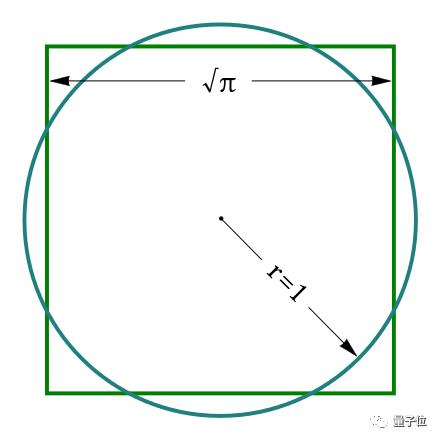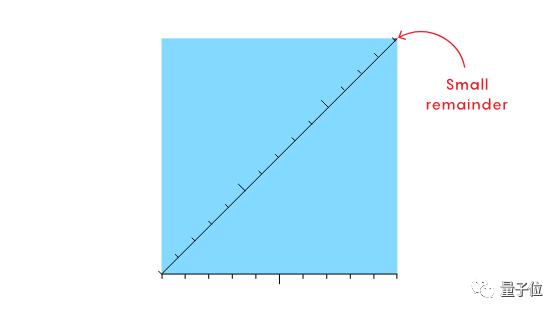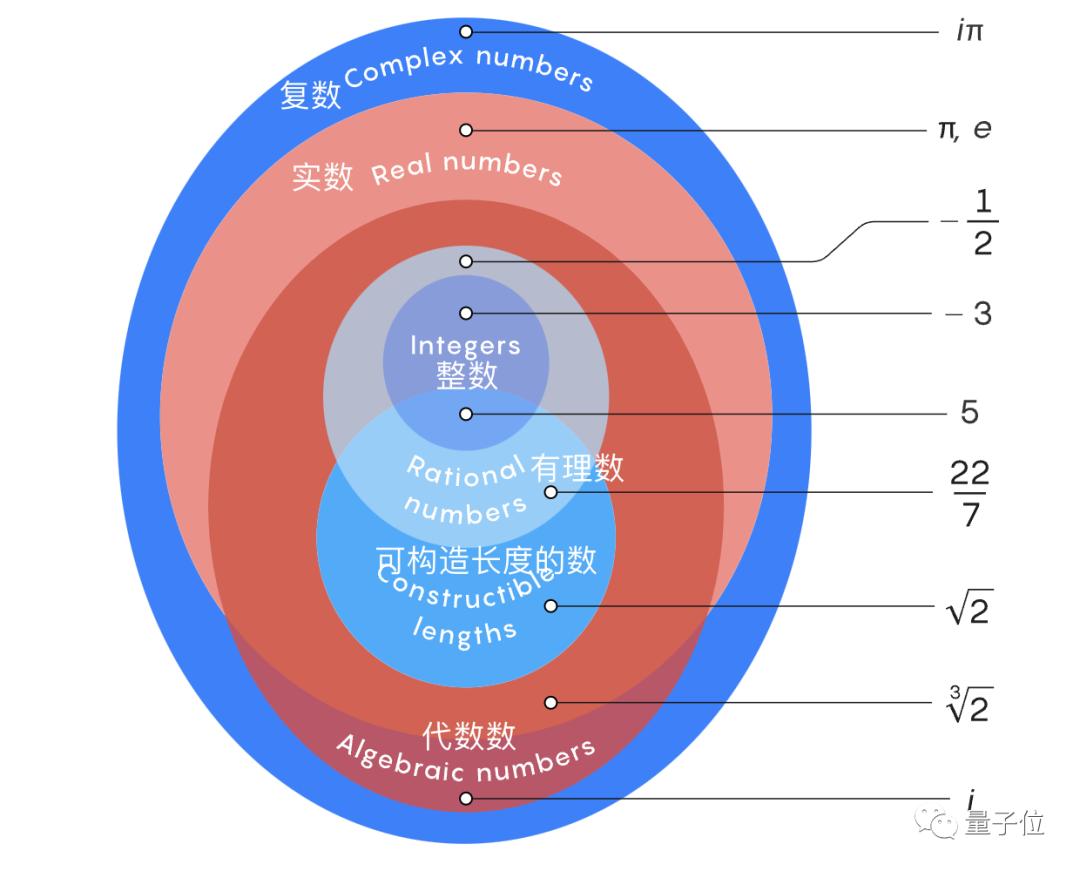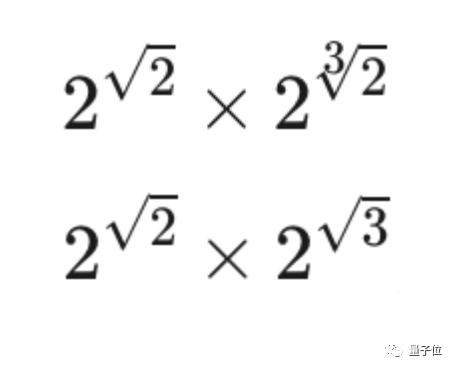The layout of central enterprises makes efforts to "new infrastructure"
On March 4th, Standing Committee of the Political Bureau of the Communist Party of China Central Committee proposed "accelerating the construction of major projects and infrastructure that have been clearly defined in the national plan, and speeding up the construction progress of new infrastructure such as 5G networks and data centers", and "new infrastructure" became a hot word widely concerned by the society. Industry and capital market show strong interest, expecting "new infrastructure" to become the leader of effectively driving economic development, helping China’s economy get out of the impact of the epidemic and usher in a broader development space. So, where is the new "new infrastructure"? As the "pillar" of China’s economy, how can the central enterprises, which have just fully supported the fight against the epidemic and taken the lead in resuming work and production, play a role in the "new infrastructure"?
Central enterprises have acted quickly, starting early, planning early, investing early, developing early and building early, giving full play to the advantages of the main force of the industrial chain, leading the "new infrastructure" with investment-driven and hard-core technology, striving to be investors, developers and builders of the "new infrastructure" industrial chain, upgrading "new consumption" with the "new infrastructure", forming new impetus for growth and promoting high-quality development.

Where is the new "new infrastructure"?
The concern about "new infrastructure" did not begin this year.
In fact, as early as the Central Economic Work Conference held at the end of 2018, 5G infrastructure, UHV, intercity high-speed railway and intercity rail transit, charging piles, big data centers, artificial intelligence, and industrial Internet were identified as "new infrastructure construction".
Three months later, at the National People’s Congress in 2019, the government work report clearly requested that "the pace of 5G commercialization and the scale deployment of IPv6 (Internet Protocol Version 6) should be accelerated, and new infrastructure construction and integration applications such as artificial intelligence, industrial Internet and Internet of Things should be strengthened".

Infrastructure can be divided into "traditional" and "new".
Traditional infrastructure mainly includes railways, highways, airports and bridges. In this field, China is relatively perfect, but there are still shortcomings.
New infrastructure is generally considered to include 5G, UHV, intercity high-speed railway and intercity rail transit, new energy vehicle charging piles, big data centers, artificial intelligence, industrial Internet, Internet of Things and other fields. In these areas, China has huge room for development.
Different from traditional infrastructure, "new infrastructure" pays more attention to hard-core technologies such as digitalization and intelligence.
It is not difficult to find that promoting "new infrastructure" is a clear direction since 2019. At the beginning of this year, under the influence of COVID-19 epidemic and other factors, the "new infrastructure" was put in a more important position, and it became inevitable to accelerate it.
As an important basic industry and emerging industry, "new infrastructure" is a new engine for China’s economic growth, which is connected with huge investment and demand at one end and a powerful consumer market that is constantly upgrading at the other. As far as the construction of 5G network is concerned, by cultivating the prosperous Internet economy, artificial intelligence, digital economy and other new technology industries, it will indirectly drive the total economic output of several trillion yuan, laying a solid foundation for seizing the commanding heights of the new generation of information technology in the world.
Investment promotion: 5G and UHV construction lead the way, and speed up the "new infrastructure" in a big way.
Recently, the three major telecom central enterprises and the Tower Company all said that they will actively accelerate the construction of 5G this year and make greater contributions to the realization of a network power and the comprehensive construction of a well-off society. For a time, 5G became the "leader" of "new infrastructure".
According to the "China Mobile Economic Development Report 2020" recently released by GSMA mobile think tank, by 2025, the penetration rate of 5G users in China will increase to nearly 50%, which is equivalent to other major 5G markets such as South Korea, Japan and the United States. China Information and Communication Research Institute predicts that by 2025, the cumulative investment in 5G network construction will reach 1.2 trillion yuan, and 5G network construction will also drive investment in upstream and downstream of the industrial chain and applications in various industries. It is estimated that by 2025, it will drive more than 3.5 trillion yuan of investment.
On March 6th, China Mobile started the procurement of the main equipment of the second phase wireless network of 5G this year. The data shows that by the end of February, the number of China Mobile’s 5G base stations has exceeded 80,000, and the number of users of 5G packages has reached 10 million. This year, we will maintain the goal of "building 300,000 5G base stations, and the 5G network will cover cities above the prefecture level".

On March 10th, China Telecom and China Unicom issued the "Announcement on Centralized Pre-qualification of Joint Centralized Procurement of Wireless Main Equipment for 5G SA New Construction Project in 2020". According to the announcement, China Telecom and China Unicom will start the joint centralized procurement of 5G SA wireless master equipment, and the estimated procurement scale is not less than 250,000 stations. It is planned to complete all the construction progress before the third quarter. According to another introduction, China Telecom and China Unicom will strive to complete the joint construction task of 47 cities and 100,000 5G base stations in the first half of 2020. Among them, China Unicom plans to achieve 5G coverage of all cities in China by 2020.

China Tower said that it will give full play to the advantages of overall planning and fully meet the needs of telecom enterprises for 5G construction economically and efficiently. By the beginning of March, more than 200,000 5G base stations had been built in China Tower. In the construction of 5G, China Tower insists on sharing without new construction, strictly controls the proportion of new stations and reduces the construction cost. More than 97% of the demand is met by using existing resources. At the same time, in-depth cooperation with railways, power grids, real estate, municipal transportation, etc., for the development of 5G, formulate indoor and outdoor standardization and integrated coverage schemes for communication networks.
5G is becoming a new infrastructure in our lives, and its future is clearly visible.
In fact, the future has come.
In this fight against the epidemic, the "black technology" of central enterprises represented by 5G, drones, robots, 3D printing, etc. has made great efforts to help prevent and control the epidemic, and big countries have embarked on the battlefield against the epidemic, winning wide attention and praise at home and abroad.
Under the 5G network environment built by China Telecom, China Unicom, China Mobile and other communication companies, in Wuhan, the 5G telemedicine system allows Beijing experts to cross 1,200 kilometers and realize "face-to-face" high-definition treatment guidance with clinicians on the front line of "war and epidemic"; In the shelter hospital, medical staff used wearable devices to connect to the 5G wireless network to collect physiological parameters. China Mobile’s "5G+unmanned epidemic prevention vehicle" intelligent robot is carrying out intelligent disinfection and medical and health services, and working with partners to deploy a medical temperature patrol robot based on 5G communication technology, which comprehensively uses technologies such as the Internet of Things, machine vision, biometrics, artificial intelligence, cloud computing and big data, and integrates various environmental awareness sensors, and can be widely used in stations, squares, business districts, hospitals, schools, communities and key units.

Chihiro Location Company, jointly sponsored by Ordnance Industry Group and Alibaba Group, officially launched the "Flying Wing Action" to build a platform for unmanned aerial vehicles to fight epidemics. Tens of thousands of unmanned aerial vehicles across the country are connected to the Beidou high-precision positioning service provided by Chihiro Location, and the drones are used for accurate spraying and disinfection, inspection and shouting and other epidemic prevention operations. China Electric Power Branch and SF Express successfully completed the first unmanned emergency transportation delivery task, and the drone landed at Wuhan Jinyintan Hospital to deliver urgently needed medical and epidemic prevention materials to medical staff.
… …
Experts from the World Health Organization said that it is simple and efficient for China to conduct online remote diagnosis and treatment by comprehensively using big data, artificial intelligence, 5G and other technologies. The BBC reported that "in the battle against Covid-19, China deployed disinfection robots, smart helmets, drones equipped with thermal cameras and advanced facial recognition software." In the fight against the epidemic, China developed new applications in time, and 5G and information technology played an unexpected role.
In this epidemic, big data and information technology of central enterprises helped to prevent and control the epidemic, which played an unexpected role and effect, and provided a powerful reference for epidemic prevention and control and the use of public medical facilities in other countries, and also provided a scientific and technological model for the application of high technology in public health facilities and better treatment of patients in China in the future.
UHV, as one of the seven fields of "new infrastructure", shows the main direction of economic and social development and industrial upgrading and revitalization, and has the advantages of long industrial chain, strong driving force and remarkable economic and social benefits.

On March 11th, at a video research meeting, State Grid Corporation of China emphasized: give full play to the driving force of UHV industry and accelerate the construction of new infrastructure. According to the latest caliber of the Ministry of Infrastructure of State Grid, the annual investment scale of UHV construction projects of State Grid Corporation is 181.1 billion yuan, which can drive social investment of 360 billion yuan, with an overall scale of 541.1 billion yuan, injecting strong impetus into economic and social development.
For example, northern Shaanxi, which started construction on February 28th — The 800 kV HVDC project in Hubei is the first UHV project newly started by State Grid Corporation of China this year, with a total investment of 18.5 billion yuan, which is expected to directly drive the equipment production scale of about 12 billion yuan, drive the investment in power supply and other related industries to exceed 70 billion yuan, and increase more than 40,000 jobs.
It can be seen that UHV, as the highlight of "new infrastructure", has long-term competitiveness and is for the future. It is reported that after UHV, State Grid will also accelerate another "new infrastructure" field — — Construction speed of charging piles for new energy vehicles. On March 18th, State Grid proposed to speed up the construction of new infrastructure and make continuous efforts in the development of UHV and the construction of new energy vehicle charging piles. Some experts predict that in the next 10 years, the country is expected to form a charging pile infrastructure construction market of 1.02 trillion yuan.
Innovation-driven: big data, rail transit technology research and development, digital upgrading of "new infrastructure"
During the epidemic period, China Electric Power Branch quickly set up a big data research team of more than 200 people, and quickly developed and launched a "one network" big data system for epidemic prevention and control and resumption of production. The system adopts big data model of infectious disease dynamics and time series prediction model, and forecasts the confirmed cases in 11 key provinces and 16 key cities in the next ten days from February 6th. The results show that the average prediction error of three days in advance is only 0.81%.

Based on the "One Network" system, China Electric Power Branch has launched a series of mobile phone inquiry applications for the public, including "Little Nurse" who can check people who are in close contact, "Little Housekeeper" who can fill in the basic information of communities and buildings, "Little Warrior" who can check traffic checkpoints, and "Little Helper" who can help enterprises monitor the risk of employees and screen them in time, etc., to meet the new needs of the market in a special period.
The docking platform of supply and demand for enterprises’ resumption of work and production developed by State Grid E-commerce has solved the problems of mismatch between supply and demand of materials and asymmetric information in the process of resumption of work and production.
"It brings together the supply and demand information of many enterprises across the country. Whether it is purchasing materials in short supply or selling equipment and materials, we can easily find partners, which is really a good helper for our small and medium-sized enterprises to resume work." On March 3rd, Liu Huaping, the general manager of Beijing Shengrui Lianchuang International Trade Co., Ltd., who found the source of meltblown cloth through the supply and demand docking platform of the enterprise built and operated by State Grid E-commerce Company, repeatedly praised it.
The supply-demand docking platform for enterprises to resume work and production provides enterprises with services such as release of supply-demand information, display of supply and service information, matching and docking of supply and demand information, and comprehensively assists the production and supply of epidemic prevention protective materials and enterprises to resume work and production. Up to now, the supply and demand docking platform has published more than 6,000 pieces of supply and demand information of more than 5,300 enterprises, with 5.619 million visits to the platform and a cooperation amount of 4.2 billion yuan, which effectively promoted the orderly resumption of work and production of enterprises during the epidemic period and achieved good results.
The "supply-demand docking platform" is just a case in which central enterprises use the Internet to "digitize" services for both the supply and demand sides.
China Merchants Group has used various new technologies such as blockchain and big data in China Merchants Port to build a unified digital application platform for business innovation scenarios such as paperless and electronic circulation of documents and gate automation, namely China Merchants ePort. During the epidemic period, China Merchants ePort made great efforts to provide 24-hour online customs clearance, logistics and other services for all units and users in the port ecological circle, constantly improving the level of intelligence and automation of operations, greatly reducing offline contact, and building a security line for the business of resuming work and production.

The social governance big data platform developed by Aerospace Wisdom Company of the Fifth Academy of Aerospace Science and Technology Group has played an important role in the management and control of many places, from identifying people to identifying vehicles, from personnel flow, information screening of key people to information reporting and integration, and analyzing key difficulties in management and control. China Satcom, a subsidiary of Aerospace Science and Technology Group, also provides users with information about the epidemic situation in novel coronavirus according to the deployment of the State Administration of Radio, Film and Television. More than 140 million rural direct broadcast satellite users in China can receive and check the epidemic situation at any time through the direct broadcast satellite set-top box.

The logistics and transportation of hazardous chemicals is the main artery of the whole petrochemical industry. The traditional logistics mode has many disadvantages, such as low level of informatization, high transportation cost, fragmented supervision and potential safety hazards. In order to solve the pain points in the industry, Sinochem Energy Technology has created three products: Canghai Gang, Shipping Gang and 66 Express, providing a complete set of logistics solutions for the petrochemical industry. Through the online connection of shippers, warehouses, fleets, ports and docks, governments, commodity inspection and other related parties, a digital infrastructure of petrochemical supply chain covering warehousing, vehicle and boat transportation will be built.
CRRC is vigorously promoting the research and development of intelligent technology applications, which will transform the high-speed rail transit field in the "new infrastructure" to digital manufacturing and innovation-driven transformation.

Bogies are one of the most important components on rail transit vehicles, equivalent to the "chassis" of rail transit vehicles, and are the most important components that determine the safety, comfort and reliability of rail transit products. Bogies have more than 2,000 parts and components, which are complex in structure and require high accuracy and quality reliability, directly affecting the running quality of vehicles and the safety of passenger transportation.

In March 2019, the world’s first intelligent manufacturing workshop for rail transit bogies built by CRRC Zhuzhou Machinery Co., Ltd. was put into operation, filling the gap in the global application of digital and intelligent technologies for rail transit bogies. The 11 production lines cover the whole process of manufacturing bogies such as processing, assembly, welding, painting and logistics.
Zhou Qinghe, Party Secretary and Chairman of CRRC Zhuji Company, said that this model will guide the transformation of the production mode of China’s rail transit equipment manufacturing industry and accelerate the transformation of the whole industry to digital manufacturing and innovation-driven.
Driven by the industrial chain: the Internet of Things and cloud computing are in full swing, and the "new infrastructure" is intelligently improved.
According to industry experts’ analysis, from the perspective of industrial chain, the UHV industrial chain mentioned above includes power supply, electrical equipment, energy-using equipment, raw materials, etc. The industrial chain is long and interlocking, with strong driving force. The 5G industrial chain mentioned above covers a wider range. The upstream industries mainly include chips, optical devices and radio frequency devices, while the midstream industries mainly include base stations, transmission equipment and base station antennas. Downstream industries mainly include operator market and terminal equipment market, especially the combination of 5G with artificial intelligence, big data and cloud computing, which brings more abundant application scenarios, such as driverless, smart city, Internet of Things and smart medical care, and will bring more convenience to life.

Wu Shengyu, director of the Institute of Energy Strategy and Planning of State Grid Energy Research Institute, said that on the one hand, when the epidemic is effectively controlled and after the epidemic, the electricity consumption of the whole society will be replenished, especially in industries and regions that are greatly affected by the epidemic, and the replenishment will be more obvious. On the other hand, other "new infrastructure" fields represented by 5G base stations and big data centers are big power consumers. The resumption of construction of UHV and other infrastructure is to prepare for the power supply guarantee in advance, and further guarantee the "six stabilities".
In the workshop of Nanjing Guodian Nanzi Automation Co., Ltd., intelligent logistics cars shuttle between factories to transport materials. A six-axis manipulator is screening the starting voltages of different relays, and it moves quickly. "It used to be the work of four people, but now one manipulator will do it all." The staff said.
China huadian’s high-end manufacturing company — — After Guodian Nanzi Smart Factory is fully put into operation, the overall production efficiency will increase by 42.48%, the current human resource cost can be reduced by 32%, the first-time quality pass rate will increase by 13.25%, and the energy consumption will be reduced by 8%.
At present, Changqing Oilfield of China Petroleum has built the largest Internet of Things system for oil and gas production in China, covering 94.4% of oil fields, 100% of gas fields and 96% of oil and gas wells, which constitutes the basic data of Changqing Data Lake. Based on this, Changqing Oilfield collects, tracks and coordinates the situation that the daily epidemic situation affects the production in time through the intelligent production command system, and monitors the company’s key production information such as oil and gas production, sales volume, capacity building and production assistance in real time for 24 hours, so as to realize efficient production operation command, intelligent scheduling, information sharing and departmental linkage. At present, the coverage rate of unattended stations in the production line of Changqing Oilfield is over 50%, and the coverage rate of unattended stations in gas fields is 80%.
In Dazu, Chongqing, the Intelligent Networked Vehicle Test Base, which is wholly-owned by China Automobile Research Institute, a general technology group, is the largest comprehensive test and evaluation base for intelligent networked vehicles in southwest China. Intelligent signal control system, V2X communication system, intelligent street lamp control system, height-limiting equipment and so on are built in the road area of the base, which can meet the current technical specifications and site test requirements of intelligent networked vehicles and meet the test requirements of all road transport vehicles within 55 tons.

Fuzhou Cloud Computing Data Center Phase II civil engineering project undertaken by China Construction Sixth Bureau is in full swing. The project officially resumed on February 20, 2020, with a total construction area of about 36,000 square meters. After the project is completed, it will have 4,092 cabinets, meet the international T3+ and national A-level data center construction standards, and become a national demonstration base for new industrialized industries, becoming the only demonstration base with special series in Jiangxi Province.
The National Health Care Big Data Northern Storage Center project located in Jinan is the first national health care big data center construction project initiated in China. The first phase of the project, undertaken by China Construction Fifth Bureau, has a construction area of 44,000 square meters. The construction of the project marks that Jinan has become the first pilot city in China to plan and start the national health care big data construction. The project is aimed at building a world-class and most advanced health care big data center in China. After completion, it will realize an ecosystem of big data industry chain integrating politics, production, learning, research and use.
R&D, investment, construction, and more central enterprises are laying out "new infrastructure". As time goes by, central enterprises will perform more and better in the "new infrastructure", better serve high-quality industrialization and high-quality urbanization, promote supply-side structural reform, and serve the high-quality development of China’s economy.



















